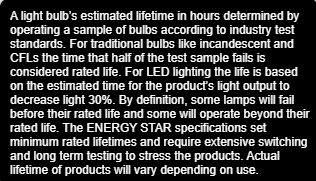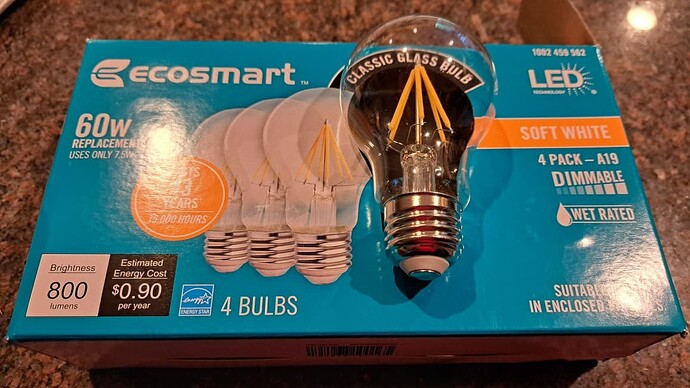The longer you leave it in the packaging the more time you are wasting...
By contrast, Hue rates many of it's bulbs at what would equate to 20 years, from memory... My oldest bulbs have been running for 4-5 years.
Like every other light bulb in existence, its rated hours are based on turning it on and never turning it on and off again. And having no power fluctuations or spikes.

No, no... I'm sure the home automation industry has learnt the lessons of the past and applied rigorous procedures when testing their kit... Surely.... 
Yeah, I'm sure it was all very scientifically done.
How about the flickering led streetlights?
I've seen my share of them, and you have to do more than use a step stool to get to them.
The night-owls come and replace those.... They have a steady supply of LED bulbs....
I've seen that too, and it makes me mental.
Just like everything else humans do, we "fixed" one problem (energy inefficient bulbs) and created entirely new ones (flickering, more expensive bulbs, short life spans due to electronic failure, etc).
IDK, my 9.5 yo kickstarter bulbs are still going strong. i have a few c.crane led bulbs that are at the 13 yr mark. The only LED bulbs i’ve lost so far are ones i put on a dimmer that dont support dimming. I dont see why not 13 yrs or more.
That sums up my experience with dumb LED's. The smart ones seems to have less of those issues IMO.
Did someone say testing standards? Very interesting stuff here…
Maybe, but that tends to be the worst rating due to thermal issues. The beauty of packaging claims, is that you can start sensational and expect that nobody will dive into the details.
When I was briefly in the lighting control industry (before LED was common), our internal standards were open to negotiation. Design for minimum of 10 years? Sure, but can we say 4 hours per day is typical?
![]()
![]()
EcoSmart bulbs are based on 3 hours a day. It's not stated if the life includes the off time.
A word about "expected" life.
Like statistics, "life" can be presented in nearly limitless values depending on your assumptions: I found this in an light reliability paper:
An average rating, in hours, indicating when 50 percent of a large group of lamps has failed (operated at nominal lamp voltage and current). Manufacturers use three hours per start for fluorescent lamps and 10 hours per start for HID lamps when performing lamp life testing procedures. Every lamp type has a unique mortality curve that depicts its average rated life.
In addition, expected life could be based on the expected LED loss in brightness as they age. Or could be based on some calculation of reliability.
So basically the expected life of an LED bulb is approximately as informative as a Politician's statement.
Energy Star site doesn't add much clarity. They indicate that it is based on the luminosity of the LED, which seems to ignore common failure modes.

If you need dimmable, then why stop at 13 years? This one will get you 45 years!
https://www.energystar.gov/productfinder/product/certified-light-bulbs/details/2409318
I refuse to ever by that brand again. They're trash.... Start flickering after a couple of months. No thanx.
I just came in to say the same. I have replaced all of my ecosmart bulbs and threw them in the garbage.
I've had good luck with Home Depot's EcoSmart bulbs. And if I have an issue I just stop by my local store.
I have too, actually. Have had good luck with Philips LEDs too.
I've had the worst luck with GE (in terms of flickering and dying randomly), but some people swear by them. So who knows?
Company test team finds distribution from 3mos to 15 years.
Marketing: "We have a 15 year bulb!!"
Legal: "Um, no, not really. Don't say that."
Marketing: "OK, a 13 year bulb. Ship it!!"


